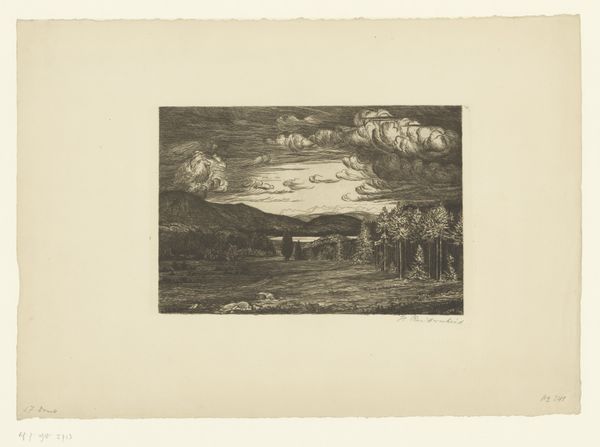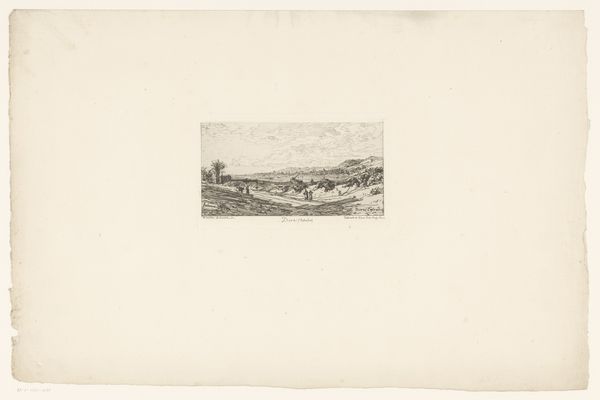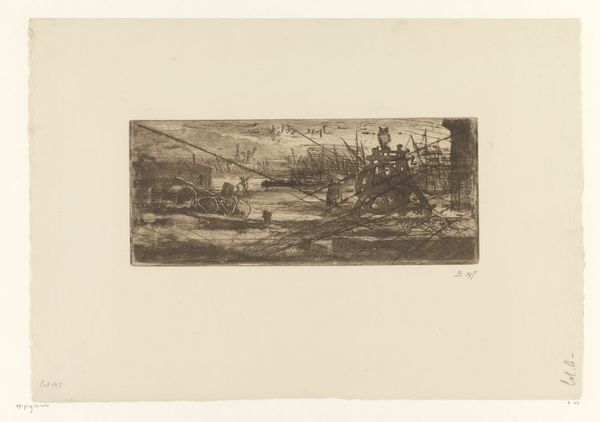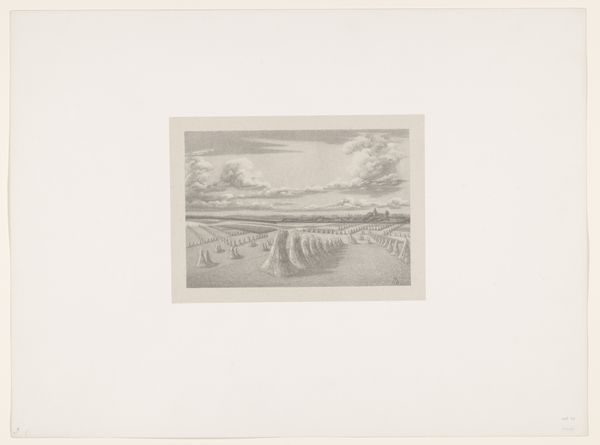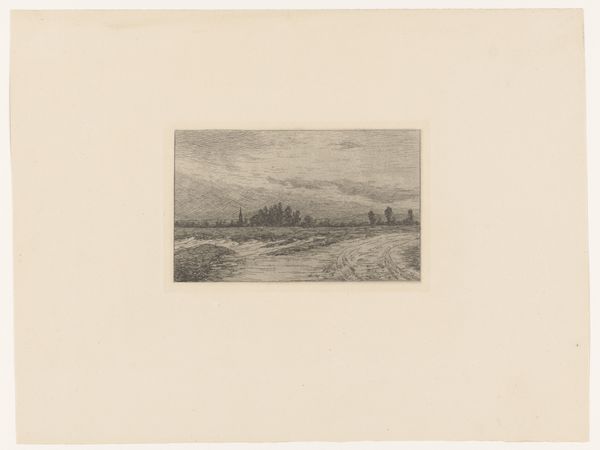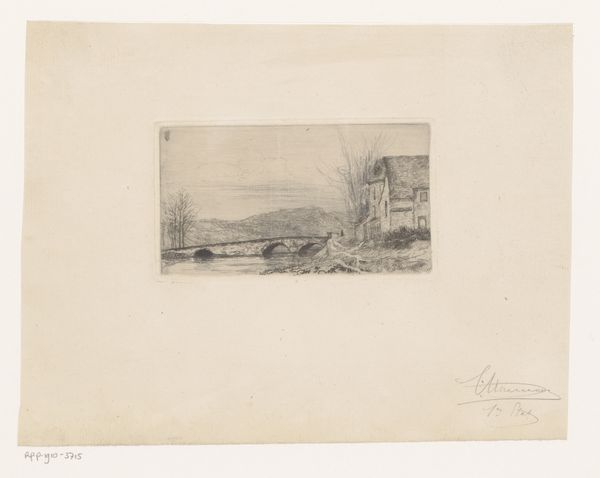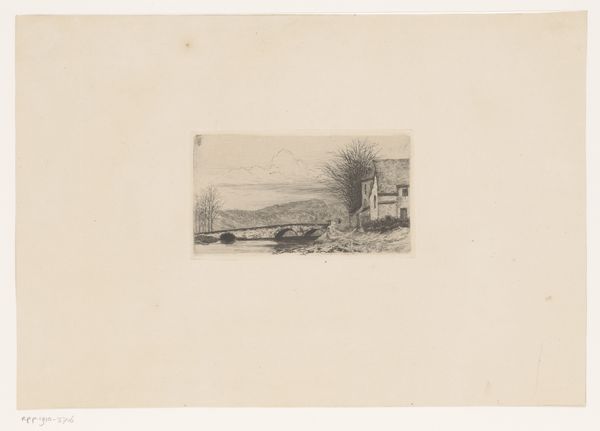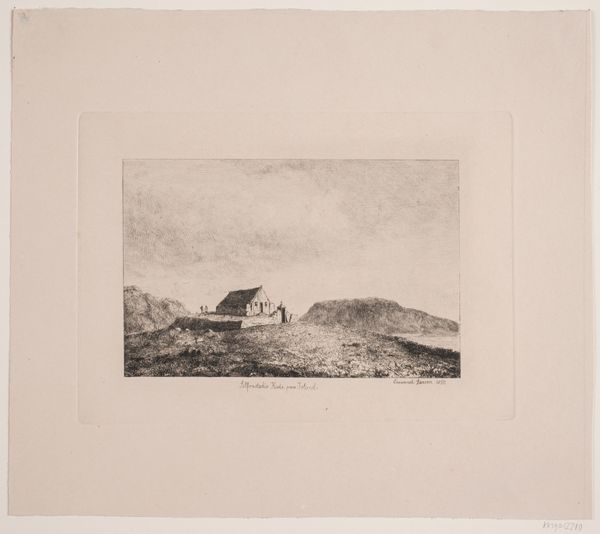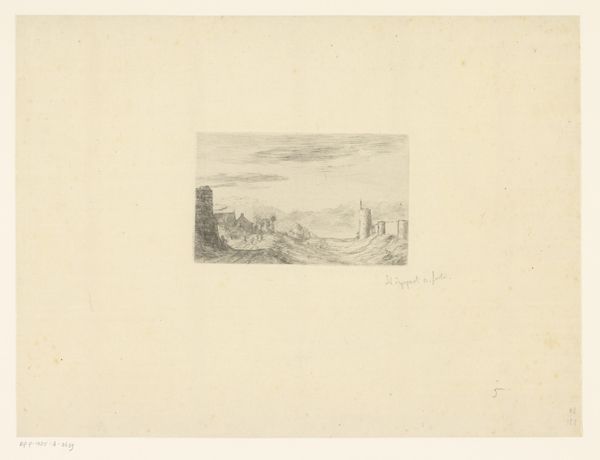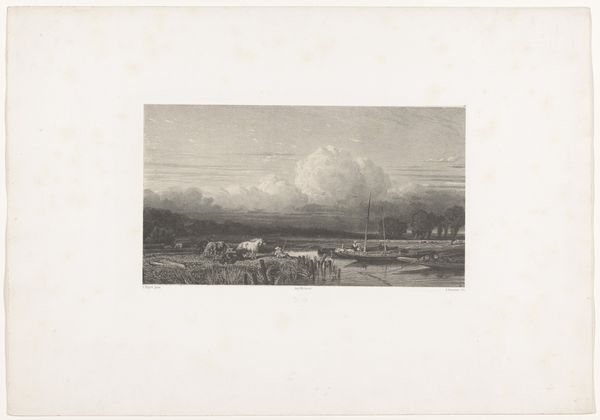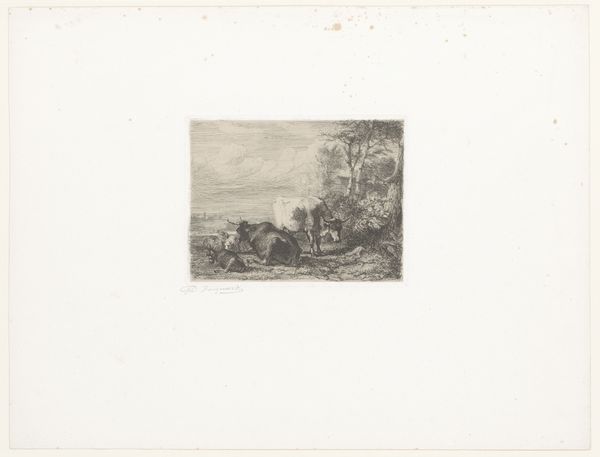
print, etching
#
pencil drawn
# print
#
etching
#
war
#
old engraving style
#
landscape
#
cityscape
#
pencil work
#
history-painting
Dimensions: height 165 mm, width 246 mm
Copyright: Rijks Museum: Open Domain
Curator: Let's examine this print by Alfred Taiée, titled "Le Bas Meudon during the Siege of Paris," created in 1870. It’s an etching, a method known for its fine detail. What's your initial impression? Editor: It strikes me as quite bleak, even stark. The dominance of greys and blacks definitely contributes to that feeling. I am immediately drawn to the contrast between the relative safety implied by the arch and the scene of potential destruction visible underneath. It seems small but intense. Curator: Yes, the etching technique really allows for conveying that intensity. What you see is a glimpse into the Franco-Prussian War. The siege was a turning point, impacting not just the city but the course of French politics and society. Editor: It certainly presents war not as some grand, heroic endeavor, but as something impacting daily life and infrastructure. The cityscape under siege highlights that contrast between civilian life and warfare, doesn't it? How might its first audiences have perceived this image? Curator: Precisely. For contemporaries, it was a reminder of trauma, defeat, and the fragility of their world. These images circulated widely and were reproduced across different print media. They influenced public perception of the war and contributed to debates surrounding national identity. Editor: Right. And looking at it today, beyond the immediate historical context, I think it speaks to broader issues about conflict. How urban landscapes become targets, how bridges - symbols of connection - become frames for destruction. It speaks about collective experiences of displacement and violence. Also, note the absence of people. It somehow makes the statement more dramatic: What happened to them? Curator: The cityscape itself becomes a protagonist. This connects with the history of urban development and military strategy. Editor: There's also the romantic sensibility that seeps in by way of that clouded sky, creating a sublime horror. It allows you to almost smell the gunpowder. What I love most is that such an ostensibly simple print captures a city teetering on a breaking point. Curator: Indeed. So, while it documents a historical event, it also asks us to confront ongoing cycles of violence and how they reshape our world. Editor: Absolutely, and to reflect on the diverse ways we bear witness, document and make sense of conflict through art. Curator: I'm glad we looked at Taiée’s work today. It really offers a view of both art's and history's intermingled roles in representing times of strife.
Comments
No comments
Be the first to comment and join the conversation on the ultimate creative platform.
